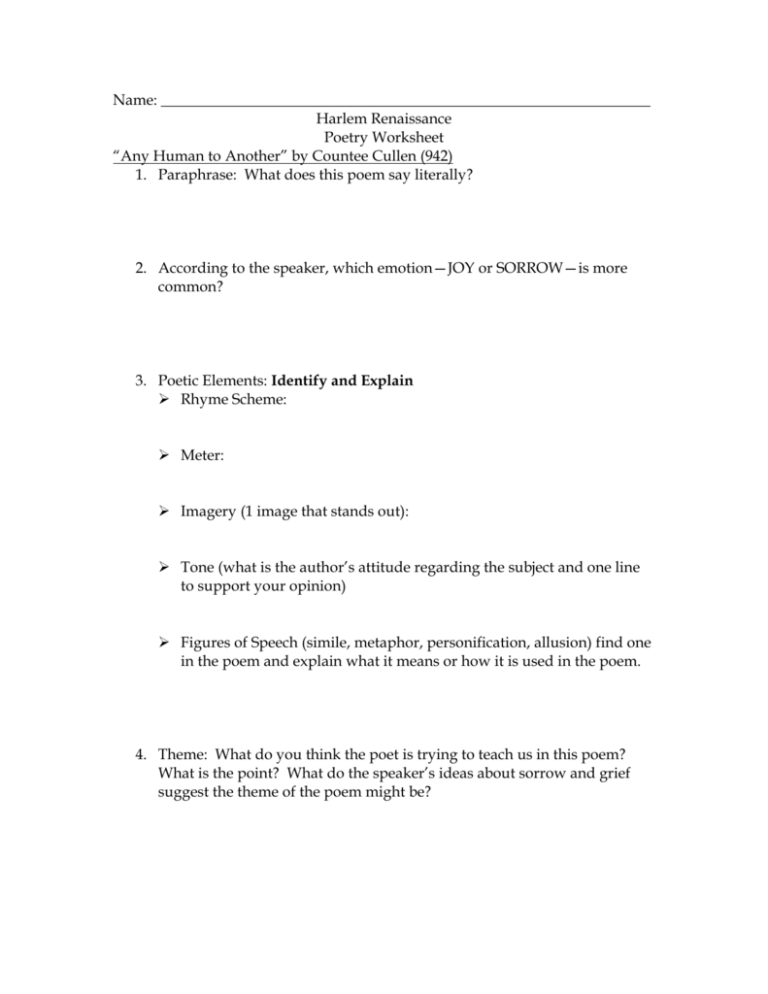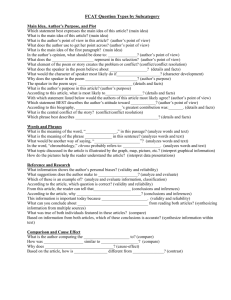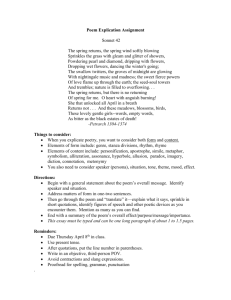Harlem Renaissance
advertisement

Name: _________________________________________________________________ Harlem Renaissance Poetry Worksheet “Any Human to Another” by Countee Cullen (942) 1. Paraphrase: What does this poem say literally? 2. According to the speaker, which emotion—JOY or SORROW—is more common? 3. Poetic Elements: Identify and Explain Rhyme Scheme: Meter: Imagery (1 image that stands out): Tone (what is the author’s attitude regarding the subject and one line to support your opinion) Figures of Speech (simile, metaphor, personification, allusion) find one in the poem and explain what it means or how it is used in the poem. 4. Theme: What do you think the poet is trying to teach us in this poem? What is the point? What do the speaker’s ideas about sorrow and grief suggest the theme of the poem might be? “A Black Man Talks of Reaping” by Arna Bontemps (947) 1. Paraphrase (doesn’t have to be line by line)—what does this poem say literally? 2. Rhyme scheme and Meter—what are they? 3. Explain the poem’s allusion to the biblical saying, “whatsoever a man sows, that shall he also reap.” What does the poem say about this idea? Does Bontemps agree? 4. Throughout the poem, images of planting and harvesting a field are used as an extended metaphor for personal struggles. a. What does “the orchard” stand for in this poem (ln.9)—in a broader context, what is the orchard a metaphor for? b. In context of the poem, who are “My brother’s sons” (ln. 10) c. Why do the speaker’s “brother’s sons” gather “stalk and root”—in other words, why do other people get to reap the harvest of the speaker’s work? What is the speaker comparing this stealing of the harvest to in real life? d. What do the speaker’s own children get as a result of all of his hard work (ln. 11)? e. Why is the fruit the speaker’s children feed on “bitter”? What can this bitter fruit be compared to?







